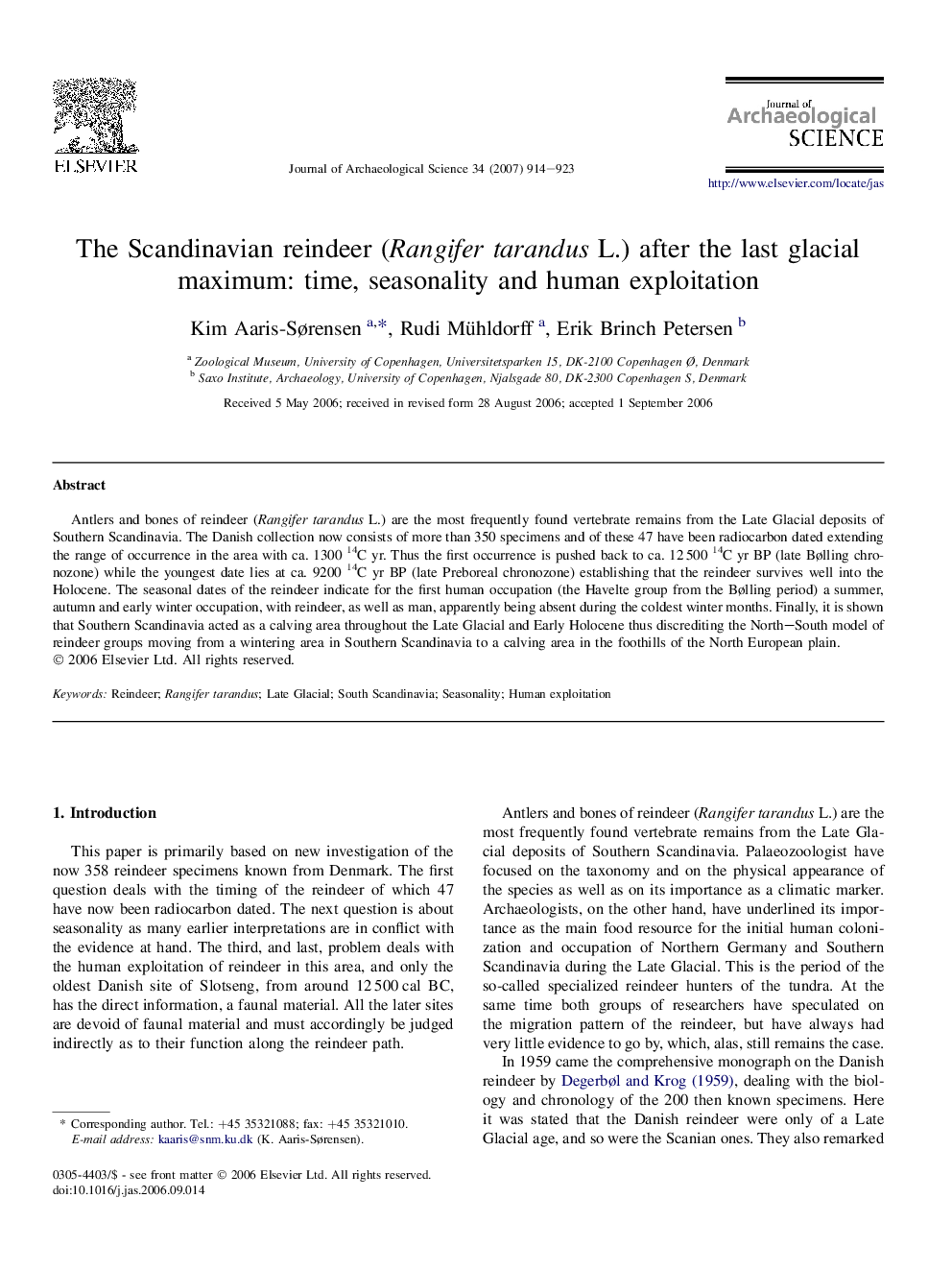| کد مقاله | کد نشریه | سال انتشار | مقاله انگلیسی | نسخه تمام متن |
|---|---|---|---|---|
| 1037570 | 943934 | 2007 | 10 صفحه PDF | دانلود رایگان |

Antlers and bones of reindeer (Rangifer tarandus L.) are the most frequently found vertebrate remains from the Late Glacial deposits of Southern Scandinavia. The Danish collection now consists of more than 350 specimens and of these 47 have been radiocarbon dated extending the range of occurrence in the area with ca. 1300 14C yr. Thus the first occurrence is pushed back to ca. 12 500 14C yr BP (late Bølling chronozone) while the youngest date lies at ca. 9200 14C yr BP (late Preboreal chronozone) establishing that the reindeer survives well into the Holocene. The seasonal dates of the reindeer indicate for the first human occupation (the Havelte group from the Bølling period) a summer, autumn and early winter occupation, with reindeer, as well as man, apparently being absent during the coldest winter months. Finally, it is shown that Southern Scandinavia acted as a calving area throughout the Late Glacial and Early Holocene thus discrediting the North–South model of reindeer groups moving from a wintering area in Southern Scandinavia to a calving area in the foothills of the North European plain.
Journal: Journal of Archaeological Science - Volume 34, Issue 6, June 2007, Pages 914–923